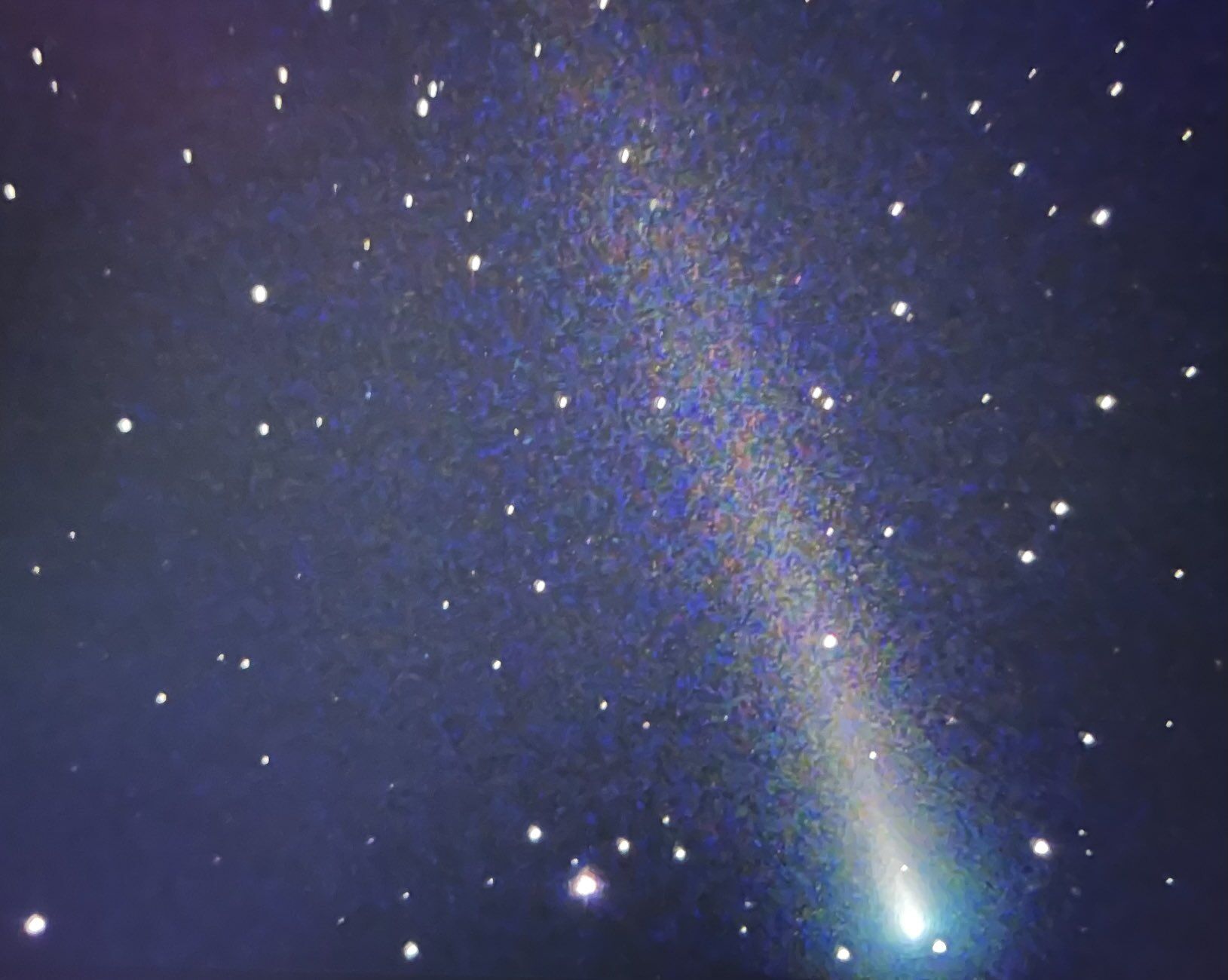
Unlike last year, the D.C. region is forecast to have clear skies on the night of Dec. 13, the peak of the Geminid Meteor Shower. But we will have to contend with a bright Waxing Gibbous Moon that will interfere with the number of meteors we can see as faint meteors will be washed out due to bright moonlight.
All is not lost, as each year the Geminid Meteor Shower reliably produces a large number of meteors per hour (75-100+) in a dark sky, with many of them being bright enough to be classified as fireballs — a meteor that is brighter than the planet Venus. To get an idea how bright this is you can see Venus in the Southwest sky right after sunset. Bottom line — these fireballs are bright!
Sky and Telescope (S & ) predicts that, “the best show begins around moonset (approximately 3 a.m. local time on Dec. 14). For the next few hours before the start of dawn, Gemini towers in the Southwestern sky, with the Geminids at full force.”
The American Meteor Society (AMS) provides some additional information about and tips for viewing the shower.
The best place to see the Geminids is at a location far away from lights with no obstructions such as trees and buildings. If you are a city dweller, you still may see the brightest Geminids as long as you are not staring into a streetlight or nestled in among tall buildings. Out in the country, along the beach or on a cruise ship is the best place to be.
The key takeaways this year are to face away from the Moon while it is in the sky, as Geminids can appear anywhere in the sky. Staying warm and comfortable is a must due to cold temperatures. I get in a sleeping bag on an adjustable lounge chair that is complete with foot and head rests. Warm beverages are a help too; be sure to have gloves and a head cover. Share viewing the shower with family, friends or your significant other.
Here are tips for photographing the shower.
You may have heard about Comet Leonard discovered in January. It’s passing closest to our planet Sunday, at a distance of 21 million miles. It currently isn’t visible except in telescopes and binoculars but comets are notorious for their unpredictable behavior.
The best time to look for the comet will be from Dec. 14 to 18 when it will be low on the Southwest horizon, possibly being visible starting about 30 minutes after sunset. It will pass near Venus on Dec. 17, so this will probably be your best opportunity for finding and seeing it. It took 35,000 years to get here and won’t be back again in any of our lifetimes, so it is worth a look.
I’ll have updates on Twitter @SkyGuyinVA and my daily blog, What’s Up? The Space Place, so be sure to check.
December’s Full Cold Moon is aptly named as it occurs on the Dec. 18, at 11:35 p.m. As described by Sky and Telescope, “It’s at apogee (farthest from Earth for the month), making this a “mini-moon” very slightly smaller than average: the opposite of a “supermoon” at perigee (closest to Earth for the month). By midnight, the Moon is very high in the South, not far from the zenith (the point directly overhead).
The full Moon of the Christmas season rides higher across the sky at midnight than at any other time of year, thus giving luster of midday to objects below. Why? December is the month of the solstice, when the Sun is farthest south in the sky. So, this is when the full Moon (opposite the Sun) is farthest north. In crossing the sky, it behaves like a pale, cold June Sun in the night.
I doubt we will have snow on the ground in the DMV for the Full Cold Moon but it is worth viewing your outside surroundings under its incredibly bright, pale moonlight at midnight. Your view will be surprising and surreal, especially if you are away from city lights.
Winter begins on the Winter Solstice, Dec. 21, at 10:59 a.m., which should find me at the Space Telescope Science Institute. That is if the scheduled launch date of Dec. 22, 7:20 a.m. for the James Webb Space Telescope (JWST) hasn’t changed. I’ll be covering the story for our WTOP audience.
Enjoy the long winter nights that start with the lineup of Venus, Saturn and Jupiter in the Southwest after sunset and the arrival two hours later of the bright and beautiful Winter stars and constellations in the East.
This is a glorious and beautiful time of year for all to enjoy the night sky.
P.S. It’s not to late to holiday shop for your fave stargazer — especially if it is you!







